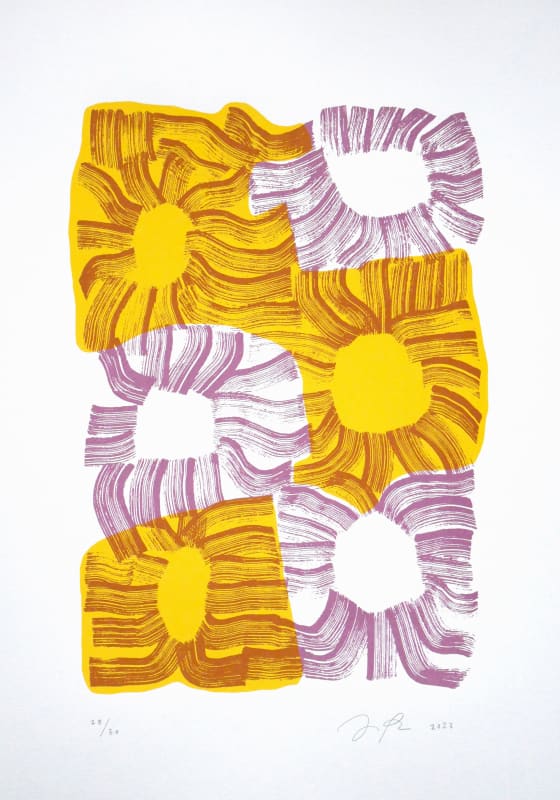Screenprinting is an image transfer technique where ink is pressed through a stencilled surface, or prepared screen, of fine material to imprint a design onto a surface. It is understood to have originated from the Song Dynasty Art period in China around 960-1279 CE where they first used this method to position patterns and detail onto fabrics. Later, Japan used stencils from paper and stiff brushes to press ink through mesh, woven from human hair.
From textiles shown at World Art fairs, this technique was then adopted and arrived in Europe around 1907. France and England began using screens made of silk and stencils from impregnated paper (paper infused with resin solutions to absorb the ink with better efficiency) as a method of printing in Western societies. From this, screenprinting was further developed to incorporate the use of photo-active chemicals in the process of screen preparation. This aspect revolutionised the commercial screenprinting industry with the emergence of Pop Art in the 1960s - utilising the screens full artistic potential.
Today, screenprinting is used in many commercial objects such as tote bags and t-shirts but is also still in use as a fine art technique. Here at RHODES Contemporary and RHODES Editions, we have a variety of artwork created with printing methods - including screenprints.
For example, Ces McCully, Jenni Rope and Stephen Ormandy all use the screenprint method to create their works.
'Harbour’ by Stephen Ormandy requires an 11-colour screen to create his prints. This means each time he has transferred a layer of colour onto the paper, he needs to re-expose his screen with light sensitive emulsion and repeat the screen preparation process in order for the next colour to be able to be applied. As you can imagine, this is a long and delicate process that is proven to be worth the wait by the clean and bright results of the final image.
I Thought That I Hid My Weirdness Well by Ces McCully, 14 Colour Screenprint on Somerset Tub Sized Radiant White 410gsm Paper, 71.4 x 50 cm, 2023
Similar to Stephen Ormandy’s ‘Harbour', Ces McCully uses a 14-layer colour screen to achieve her bold typography in 'I Thought That I Hid My Weirdness Well'. Each colour needs a new screen template so that the inks don’t smudge into each other – another lengthy process showed to be worthwhile by the visually appealing results.
For more information, please email info@rhodeseditions.com





